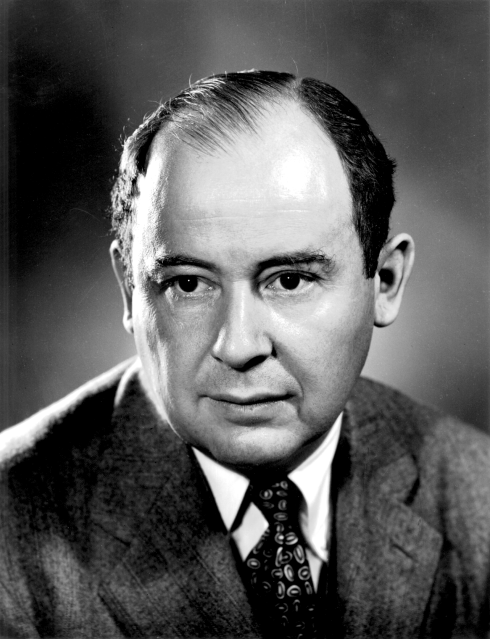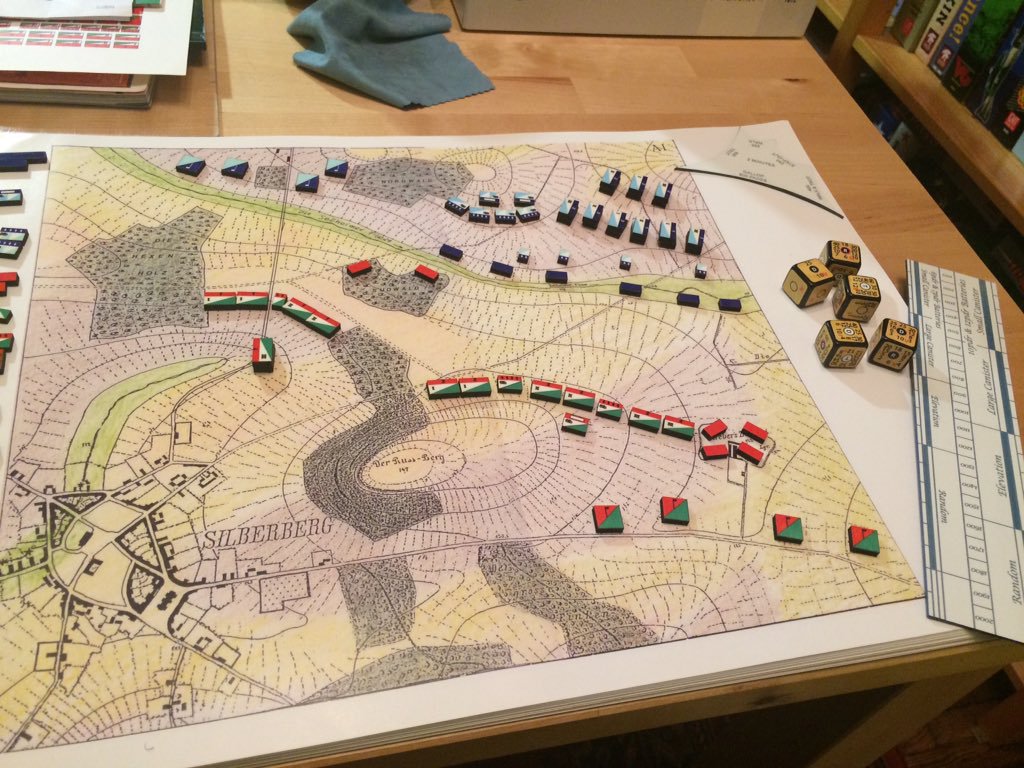|
Non-cooperative Games
In game theory, a non-cooperative game is a game in which there are no external rules or binding agreements that enforce the cooperation of the players. A non-cooperative game is typically used to model a competitive environment. This is stated in various accounts most prominent being John Nash's 1951 paper in the journal ''Annals of Mathematics''. Counterintuitively, non-cooperative game models can be used to model cooperation as well, and vice versa, cooperative game theory can be used to model competition. Some examples of this would be the use of non-cooperative game models in determining the stability and sustainability of cartels and coalitions. The difference between cooperative and non-cooperative game theory According to Nash, the difference between cooperative game theory and non-cooperative game theory is that “(cooperative game) theory is based on an analysis of the interrelationships of the various coalitions which can be formed by the players of the game. Our (no ... [...More Info...] [...Related Items...] OR: [Wikipedia] [Google] [Baidu] |
Game Theory
Game theory is the study of mathematical models of strategic interactions. It has applications in many fields of social science, and is used extensively in economics, logic, systems science and computer science. Initially, game theory addressed two-person zero-sum games, in which a participant's gains or losses are exactly balanced by the losses and gains of the other participant. In the 1950s, it was extended to the study of non zero-sum games, and was eventually applied to a wide range of Human behavior, behavioral relations. It is now an umbrella term for the science of rational Decision-making, decision making in humans, animals, and computers. Modern game theory began with the idea of mixed-strategy equilibria in two-person zero-sum games and its proof by John von Neumann. Von Neumann's original proof used the Brouwer fixed-point theorem on continuous mappings into compact convex sets, which became a standard method in game theory and mathematical economics. His paper was f ... [...More Info...] [...Related Items...] OR: [Wikipedia] [Google] [Baidu] |
Prisoner's Dilemma
The prisoner's dilemma is a game theory thought experiment involving two rational agents, each of whom can either cooperate for mutual benefit or betray their partner ("defect") for individual gain. The dilemma arises from the fact that while defecting is rational for each agent, cooperation yields a higher payoff for each. The puzzle was designed by Merrill Flood and Melvin Dresher in 1950 during their work at the RAND Corporation. They invited economist Armen Alchian and mathematician John Williams to play a hundred rounds of the game, observing that Alchian and Williams often chose to cooperate. When asked about the results, John_Forbes_Nash_Jr., John Nash remarked that rational behavior in the Prisoner's dilemma#The_iterated_prisoner's_dilemma, iterated version of the game can differ from that in a single-round version. This insight anticipated a Folk_theorem_(game_theory), key result in game theory: cooperation can emerge in repeated interactions, even in situations where it i ... [...More Info...] [...Related Items...] OR: [Wikipedia] [Google] [Baidu] |
Non-cooperative Games
In game theory, a non-cooperative game is a game in which there are no external rules or binding agreements that enforce the cooperation of the players. A non-cooperative game is typically used to model a competitive environment. This is stated in various accounts most prominent being John Nash's 1951 paper in the journal ''Annals of Mathematics''. Counterintuitively, non-cooperative game models can be used to model cooperation as well, and vice versa, cooperative game theory can be used to model competition. Some examples of this would be the use of non-cooperative game models in determining the stability and sustainability of cartels and coalitions. The difference between cooperative and non-cooperative game theory According to Nash, the difference between cooperative game theory and non-cooperative game theory is that “(cooperative game) theory is based on an analysis of the interrelationships of the various coalitions which can be formed by the players of the game. Our (no ... [...More Info...] [...Related Items...] OR: [Wikipedia] [Google] [Baidu] |
John Von Neumann
John von Neumann ( ; ; December 28, 1903 – February 8, 1957) was a Hungarian and American mathematician, physicist, computer scientist and engineer. Von Neumann had perhaps the widest coverage of any mathematician of his time, integrating Basic research, pure and Applied science#Applied research, applied sciences and making major contributions to many fields, including mathematics, physics, economics, computing, and statistics. He was a pioneer in building the mathematical framework of quantum physics, in the development of functional analysis, and in game theory, introducing or codifying concepts including Cellular automaton, cellular automata, the Von Neumann universal constructor, universal constructor and the Computer, digital computer. His analysis of the structure of self-replication preceded the discovery of the structure of DNA. During World War II, von Neumann worked on the Manhattan Project. He developed the mathematical models behind the explosive lense ... [...More Info...] [...Related Items...] OR: [Wikipedia] [Google] [Baidu] |
Minimax
Minimax (sometimes Minmax, MM or saddle point) is a decision rule used in artificial intelligence, decision theory, combinatorial game theory, statistics, and philosophy for ''minimizing'' the possible loss function, loss for a Worst-case scenario, worst case (''max''imum loss) scenario. When dealing with gains, it is referred to as "maximin" – to maximize the minimum gain. Originally formulated for several-player zero-sum game theory, covering both the cases where players take alternate moves and those where they make simultaneous moves, it has also been extended to more complex games and to general decision-making in the presence of uncertainty. Game theory In general games The maximin value is the highest value that the player can be sure to get without knowing the actions of the other players; equivalently, it is the lowest value the other players can force the player to receive when they know the player's action. Its formal definition is: :\underline = \max_ \min_ W ... [...More Info...] [...Related Items...] OR: [Wikipedia] [Google] [Baidu] |
Solution Concept
In game theory, a solution concept is a formal rule for predicting how a game will be played. These predictions are called "solutions", and describe which strategies will be adopted by players and, therefore, the result of the game. The most commonly used solution concepts are equilibrium concepts, most famously Nash equilibrium. Many solution concepts, for many games, will result in more than one solution. This puts any one of the solutions in doubt, so a game theorist may apply a refinement to narrow down the solutions. Each successive solution concept presented in the following improves on its predecessor by eliminating implausible equilibria in richer games. Formal definition Let \Gamma be the class of all games and, for each game G \in \Gamma, let S_G be the set of strategy profiles of G. A ''solution concept'' is an element of the direct product \Pi_2^; ''i.e''., a function F: \Gamma \rightarrow \bigcup\nolimits_ 2^ such that F(G) \subseteq S_G for all G \in \Gamma. Rati ... [...More Info...] [...Related Items...] OR: [Wikipedia] [Google] [Baidu] |
Nash Equilibrium
In game theory, the Nash equilibrium is the most commonly used solution concept for non-cooperative games. A Nash equilibrium is a situation where no player could gain by changing their own strategy (holding all other players' strategies fixed). The idea of Nash equilibrium dates back to the time of Cournot, who in 1838 applied it to his model of competition in an oligopoly. If each player has chosen a strategy an action plan based on what has happened so far in the game and no one can increase one's own expected payoff by changing one's strategy while the other players keep theirs unchanged, then the current set of strategy choices constitutes a Nash equilibrium. If two players Alice and Bob choose strategies A and B, (A, B) is a Nash equilibrium if Alice has no other strategy available that does better than A at maximizing her payoff in response to Bob choosing B, and Bob has no other strategy available that does better than B at maximizing his payoff in response to Alice c ... [...More Info...] [...Related Items...] OR: [Wikipedia] [Google] [Baidu] |
Prisoner's Dilemma
The prisoner's dilemma is a game theory thought experiment involving two rational agents, each of whom can either cooperate for mutual benefit or betray their partner ("defect") for individual gain. The dilemma arises from the fact that while defecting is rational for each agent, cooperation yields a higher payoff for each. The puzzle was designed by Merrill Flood and Melvin Dresher in 1950 during their work at the RAND Corporation. They invited economist Armen Alchian and mathematician John Williams to play a hundred rounds of the game, observing that Alchian and Williams often chose to cooperate. When asked about the results, John_Forbes_Nash_Jr., John Nash remarked that rational behavior in the Prisoner's dilemma#The_iterated_prisoner's_dilemma, iterated version of the game can differ from that in a single-round version. This insight anticipated a Folk_theorem_(game_theory), key result in game theory: cooperation can emerge in repeated interactions, even in situations where it i ... [...More Info...] [...Related Items...] OR: [Wikipedia] [Google] [Baidu] |
Rock Paper Scissors
Rock, Paper, Scissors (also known by #Names, several other names and word orders) is an Intransitive game, intransitive hand game, usually played between two people, in which each player simultaneously forms one of three shapes with an outstretched hand. These shapes are "rock" (a closed fist: ✊), "paper" (a flat hand: ✋), and "scissors" (a fist with the index finger and middle finger extended, forming a V: ✌). The earliest form of "rock paper scissors"-style game originated in China and was subsequently imported into Japan, where it reached its modern standardized form, before being spread throughout the world in the early 20th century. A simultaneous game, simultaneous, zero-sum game, it has three possible outcomes: a draw, a win, or a loss. A player who decides to play rock will beat another player who chooses scissors ("rock crushes scissors" or "breaks scissors" or sometimes "blunts scissors"), but will lose to one who has played paper ("paper covers rock"); a play of ... [...More Info...] [...Related Items...] OR: [Wikipedia] [Google] [Baidu] |
John Forbes Nash Jr
John Forbes Nash Jr. (June 13, 1928 – May 23, 2015), known and published as John Nash, was an American mathematician who made fundamental contributions to game theory, real algebraic geometry, differential geometry, and partial differential equations. Nash and fellow game theorists John Harsanyi and Reinhard Selten were awarded the 1994 Nobel Memorial Prize in Economic Sciences, Nobel Prize in Economics. In 2015, Louis Nirenberg and he were awarded the Abel Prize for their contributions to the field of partial differential equations. As a graduate student in the Princeton University Department of Mathematics, Nash introduced a number of concepts (including Nash equilibrium and the Nash bargaining solution), which are now considered central to game theory and its applications in various sciences. In the 1950s, Nash discovered and proved the Nash embedding theorems by solving a system of nonlinear partial differential equations arising in Riemannian geometry. This work, also ... [...More Info...] [...Related Items...] OR: [Wikipedia] [Google] [Baidu] |
Strategy Game
A strategy game or strategic game is a game in which the players' uncoerced, and often autonomous, decision-making skills have a high significance in determining the outcome. Almost all strategy games require internal decision tree-style thinking, and typically very high situational awareness. Strategy games are also seen as a descendant of war games, and define strategy in terms of the context of war, but this is more partial. A strategy game is a game that relies primarily on strategy, and when it comes to defining what strategy is, two factors need to be taken into account: its complexity and game-scale actions, such as each placement in the ''Total War'' video game series. The definition of a strategy game in its cultural context should be any game that belongs to a tradition that goes back to war games, contains more strategy than the average video game, contains certain gameplay conventions, and is represented by a particular community. Although war is dominant in strate ... [...More Info...] [...Related Items...] OR: [Wikipedia] [Google] [Baidu] |
Complete Information
In economics and game theory, complete information is an economic situation or game in which knowledge about other market participants or players is available to all participants. The utility functions (including risk aversion), payoffs, strategies and "types" of players are thus common knowledge. Complete information is the concept that each player in the game is aware of the sequence, strategies, and payoffs throughout gameplay. Given this information, the players have the ability to plan accordingly based on the information to maximize their own strategies and utility at the end of the game. A typical example is the prisoner's dilemma. Inversely, in a game with incomplete information, players do not possess full information about their opponents. Some players possess private information, a fact that the others should take into account when forming expectations about how those players will behave. A typical example is an auction: each player knows their own utility function (valua ... [...More Info...] [...Related Items...] OR: [Wikipedia] [Google] [Baidu] |







